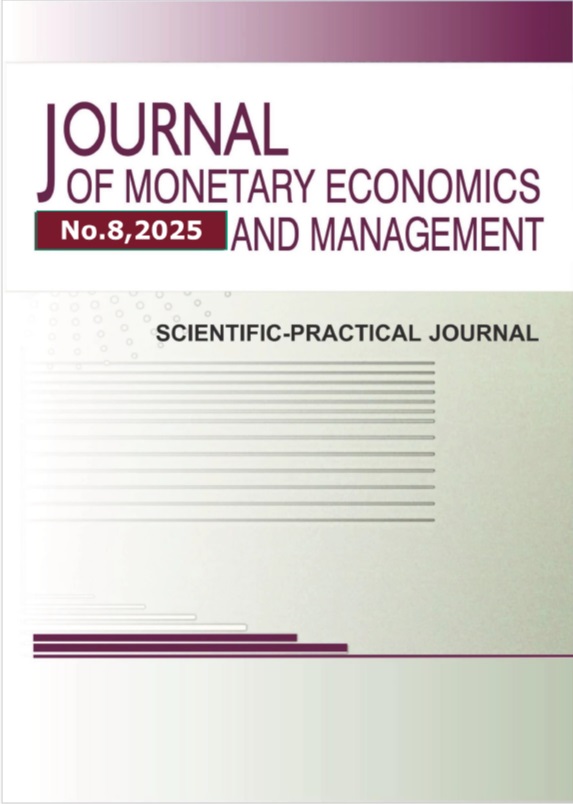Russian Federation
employee
The article explores the implementation of digital twins in the construction industry, analyzing their key applications and identifying major challenges hindering their widespread adoption. The authors examine the concept of digital twins, their evolution, and their role in improving labor productivity, optimizing design processes, construction management, and facility operations. Successful case studies, such as the use of digital twins in the construction of Huahu Airport in China, demonstrate the technology's potential to reduce timelines and costs. Special attention is given to areas like virtual design, structural health monitoring, supply chain management, and safety enhancement. The article also provides a detailed analysis of key challenges, including the integration of multimodal data, scalability issues, data security, and high implementation costs. The review concludes that digital twins hold significant potential for transforming the construction industry but require standardized solutions and overcoming existing technological and organizational barriers.
digital twins, information technology, construction industry, information security, prototype
1. Nizkaya stroitel'naya proizvoditel'nost' i kak ee povysit' [Elektronnyy resurs]. – Rezhim dostupa: https://gectaro.com/blog/tpost/s0ykyhy3g1-nizkaya-stroitelnaya-proizvoditelnost-i – Zagl. s ekrana. – Yaz.rus. (data obrascheniya: 06.07.2025).
2. Shafto M., Conroy M., Doyle R., Glaessgen E., Kemp C., LeMoigne J., Wang L. NASA Technology Roadmap: Modeling, Simulation. Information Technology & Processing Roadmap. Washington, DC: National Aeronautics and Space Administration, 2012. 38 p.
3. Digital Twins: Technology, Use Cases, and Implementation Tips [Elektronnyy resurs]. – Rezhim dostupa: https://www.altexsoft.com/blog/digital-twins/ – Zagl. s ekrana. – Yaz.rus. (data obrascheniya: 06.07.2025).
4. Omrany, H., Al-Obaidi, K.M., Husain, A., Ghaffarianhoseini, A. Digital Twinsin the Construction Industry: A Comprehensive Review of Current Implementations, Enabling Technologies, and Future Directions. Sustainability 2023, 15, 10908. https://www.mdpi.com/2071-1050/15/14/10908
5. Airports International. Case Study: Digital Twinning in Construction 2022. URL: https://www.airportsinternational.com/article/case-study-digital-twinning-construction (data obrascheniya: 21.06.2025)
6. Ozturk G. B. Digital Twin Research in the AECO-FM Industry // Journal of Building Engineering. 2021. Vol. 40. P. 102730. DOI:https://doi.org/10.1016/j.jobe.2021.102730
7. Xie H., Xin M., Lu C., Xu J. Knowledge map and forecast of digital twin in the construction industry: State-of-the-art review using scientometric analysis // Journal of Cleaner Production. 2023. Vol. 383. P. 135231. DOI:https://doi.org/10.1016/j.jclepro.2022.135231.
8. Lu R., Brilakis I. Digital twinning of existing reinforced concrete bridges from labelled point clusters // Automation in Construction. 2019. Vol. 105. P. 102837. DOI:https://doi.org/10.1016/j.autcon.2019.102837.
9. Jiang Y., Liu X., Wang Z., Li M., Zhong R. Y., Huang G. Q. Blockchain-enabled digital twin collaboration platform for fit-out operations in modular integrated construction // Automation in Construction. 2023. Vol. 148. P. 104747. DOI:https://doi.org/10.1016/j.autcon.2023.104747
10. Hüthwohl P., Lu R., Brilakis I. Multi-classifier for reinforced concrete bridge defects // Automation in Construction. 2019. Vol. 105. P. 102824. DOI:https://doi.org/10.1016/j.autcon.2019.102824.
11. Mohammadi M., Rashidi M., Yu Y., Samali B. Integration of TLS-derived Bridge Information Modeling (BrIM) with a Decision Support System (DSS) for digital twinning and asset management of bridge infrastructures // Computers in Industry. 2023. Vol. 147. P. 103881. DOI:https://doi.org/10.1016/j.compind.2023.103881.
12. Jiang W., Ding L., Zhou C. Digital twin: Stability analysis for tower crane hoisting safety with a scale model // Automation in Construction. 2022. Vol. 138. P. 104257. DOI:https://doi.org/10.1016/j.autcon.2022.104257.
13. Wu S., Hou L., Zhang G. K., Chen H. Real-time mixed reality-based visual warning for construction workforce safety // Automation in Construction. 2022. Vol. 139. P. 104252. DOI:https://doi.org/10.1016/j.autcon.2022.104252
14. Kosse S., Vogt O., Wolf M., König M., Gerhard D. Digital Twin Framework for Enabling Serial Construction // Frontiers in Built Environment. 2022. Vol. 8. P. 864722. DOI:https://doi.org/10.3389/fbuil.2022.864722.
15. Lee D., Lee S. Digital Twin for Supply Chain Coordination in Modular Construction // Applied Sciences. 2021. Vol. 11, No. 13. P. 5909. DOI:https://doi.org/10.3390/app11135909.
16. Al-Obaidi K. M., Hossain M., Alduais N. A. M., Al-Duais H. S., Omrany H., Ghaffarianhoseini A. A Review of Using IoT for Energy Efficient Buildings and Cities: A Built Environment Perspective // Energies. 2022. Vol. 15, No. 16. P. 5991. DOI:https://doi.org/10.3390/en15165991
17. Alshammari K., Beach T., Rezgui Y. Cybersecurity for digital twins in the built environment: Current research and future directions // Journal of Information Technology in Construction. 2021. Vol. 26. P. 159-173. DOI:https://doi.org/10.36680/j.itcon.2021.010.









